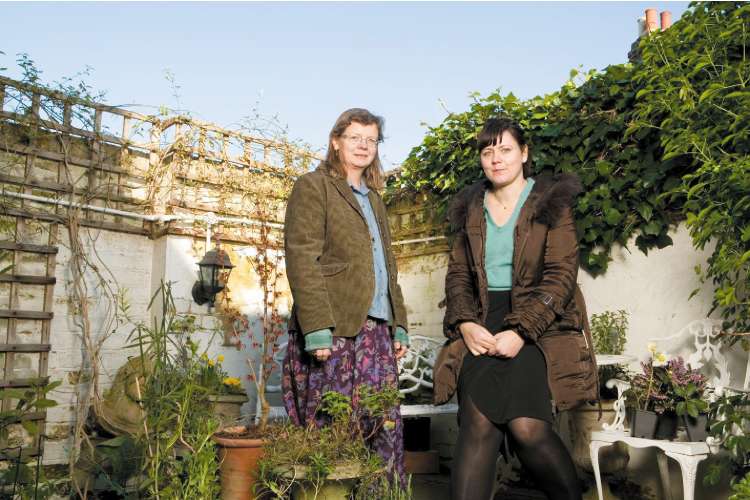Little wonder: Jane McMorland Hunter has broken every rule to create an Eden in miniature

Your support helps us to tell the story
From reproductive rights to climate change to Big Tech, The Independent is on the ground when the story is developing. Whether it's investigating the financials of Elon Musk's pro-Trump PAC or producing our latest documentary, 'The A Word', which shines a light on the American women fighting for reproductive rights, we know how important it is to parse out the facts from the messaging.
At such a critical moment in US history, we need reporters on the ground. Your donation allows us to keep sending journalists to speak to both sides of the story.
The Independent is trusted by Americans across the entire political spectrum. And unlike many other quality news outlets, we choose not to lock Americans out of our reporting and analysis with paywalls. We believe quality journalism should be available to everyone, paid for by those who can afford it.
Your support makes all the difference.Maybe she's been forewarned I can be bribed with cake, because when I arrive at the Fulham home of the garden writer Jane McMorland Hunter there is a strong smell of fresh pastry and an apple loaf cooling on the side. Her house is full of interesting things: it's piled with books, as McMorland Hunter worked in the gardening department of Hatchards in London's Piccadilly for 23 years, and here in her hall is the beautiful old hand-painted sign they used to take to the Chelsea Flower Show, saved from a skip.
But it's the garden I'm really interested in. From all the rooms you get glimpses of this miniature 4x4 (metres) affair – small, but beautiful. McMorland Hunter is the champion of the really titchy in all matters horticultural, as demonstrated by her book, The Tiny Garden. "You get people explaining in [the National Gardens Scheme's] The Yellow Book that theirs is a small garden, only quarter of an acre, as if that were really small," she laughs. "Having a really tiny garden is completely different."
McMorland Hunter set out to write a book about the most unpromising of outdoor spaces, with suggestions for side-alleys, staircases that lead to dustbins, and plots that spend all their time in the shade.
"I've always gardened," she says, with childlike enthusiasm. "When I was little, I think my parents decided I was cheap labour. We lived in the country, with acres of lawn, and when I was five or six I was given, of all things, a lawnmower. The awful thing was, I was actually pleased."
Today, McMorland Hunter's own tiny garden disobeys many of the standard rules about small spaces. Keep it formal, the convention goes. Restrict yourself to planting a few things, so you don't make it feel smaller by stuffing it with plants. Instead, she raises hundreds of annuals. "My friend has a conservatory and is good at starting them off, then I grow them on and plant them out in her garden and mine."
In summer her front garden is drifts of colour – cosmos, verbena and aquilegia – making a flowery screen that distracts prying eyes from looking in but lets the light shine in through a veil of blooms.
But it is her back garden that most epitomises her philosophy. "You have to work out why you actually want a garden. My garden is an outdoor dining-room, because that's top of my list of priorities – eating outside and having friends over." Indeed, on closer inspection, elegantly grouped into this tiny space are not one but two dining-table sets. "One for when you want to be in the sun, and one for privacy and shade on a hot summer's day."
On the cold day I visit, the view from the kitchen window is dominated by a potted witch hazel, "Rubin", covered in twisty, fiery-red flowers. "People say that you shouldn't grow witch hazel in a town garden, but I think I'll get a few years of joy out of this before it gets too big," McMorland Hunter explains. "You have to be practical when a garden is this small."
One of the best things about her book is the illustrations – a veritable sourcebook for any miniature garden. Trelliswork, mirrors and paint effects all appear, though her recommendations for planting up fire escapes might raise a few eyebrows among the health and safety conscious.
Even the deprived possessor of a single flowerbed is encouraged to stay positive: "You have an advantage over someone with room only for containers," she says; "just make sure the soil is top-quality." She is also a big fan of absolutely tiny lawns, although admits that's not standard advice, either. "It's just so lovely to be able to sit out on even a tiny patch of soft grass."
The biggest questions I want to put to my hostess are how she resists the urge to keep accumulating plants and how her garden has remained a usable space when she clearly loves plants so much? "It's a fine balance," she admits. "I have friends over for supper such a lot, so I have a permanent pile of jumpers in the kitchen [for visitors to wear outside] when it gets dark. They know to move past the plants gently." n
'The Tiny Garden' (Frances Lincoln, £12.99) is out now in paperback
Join our commenting forum
Join thought-provoking conversations, follow other Independent readers and see their replies
Comments